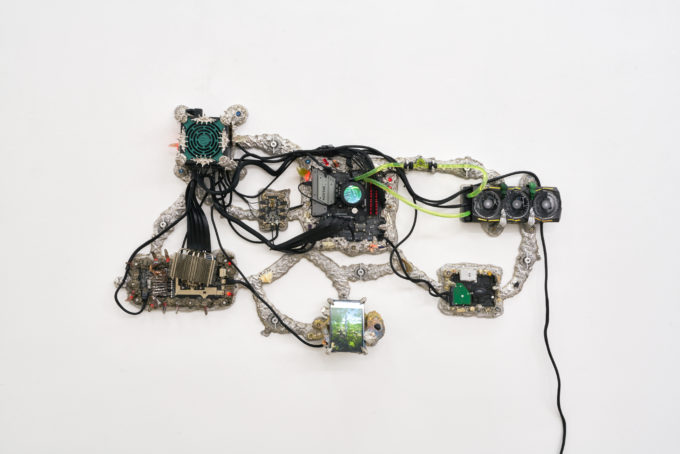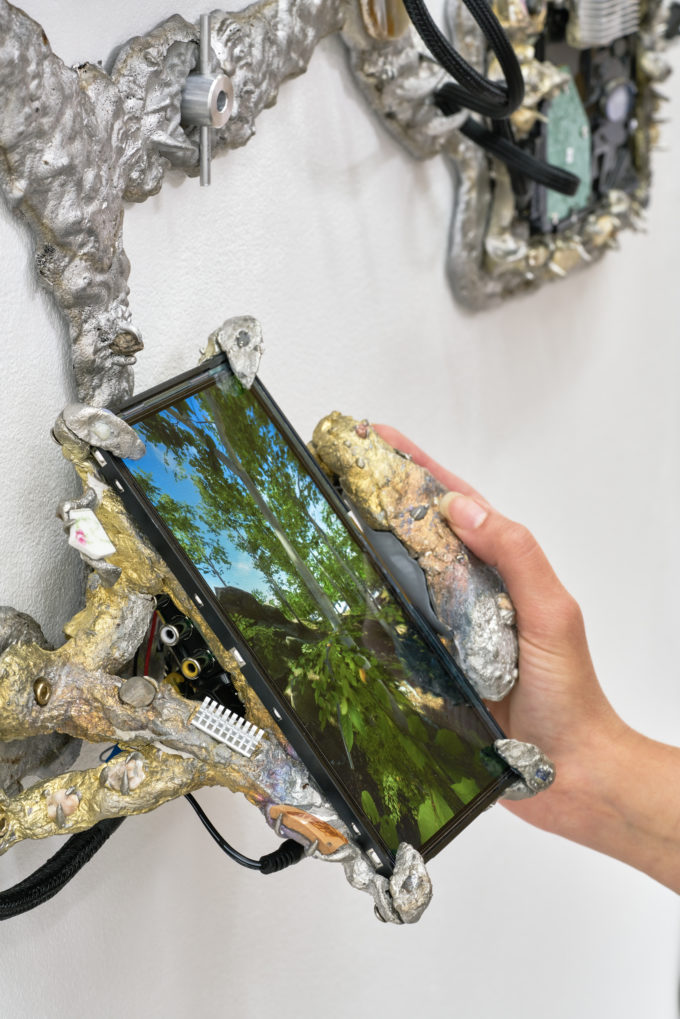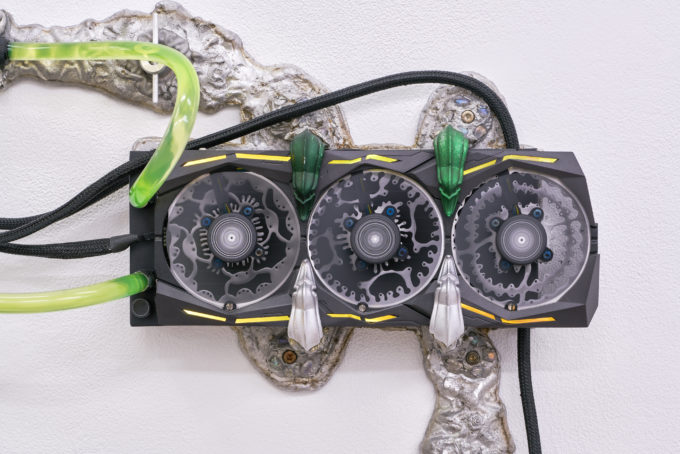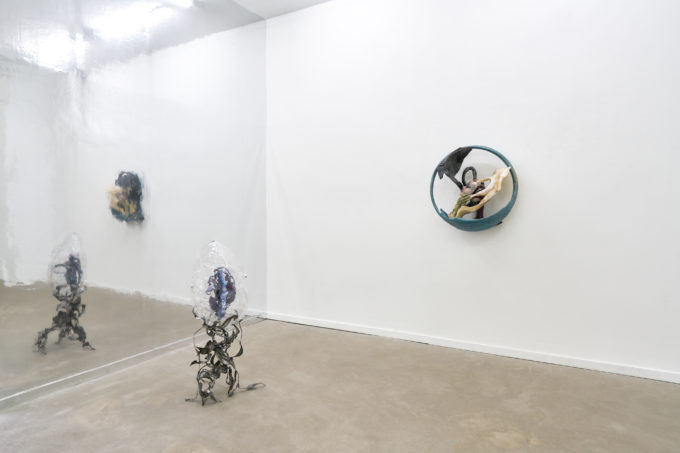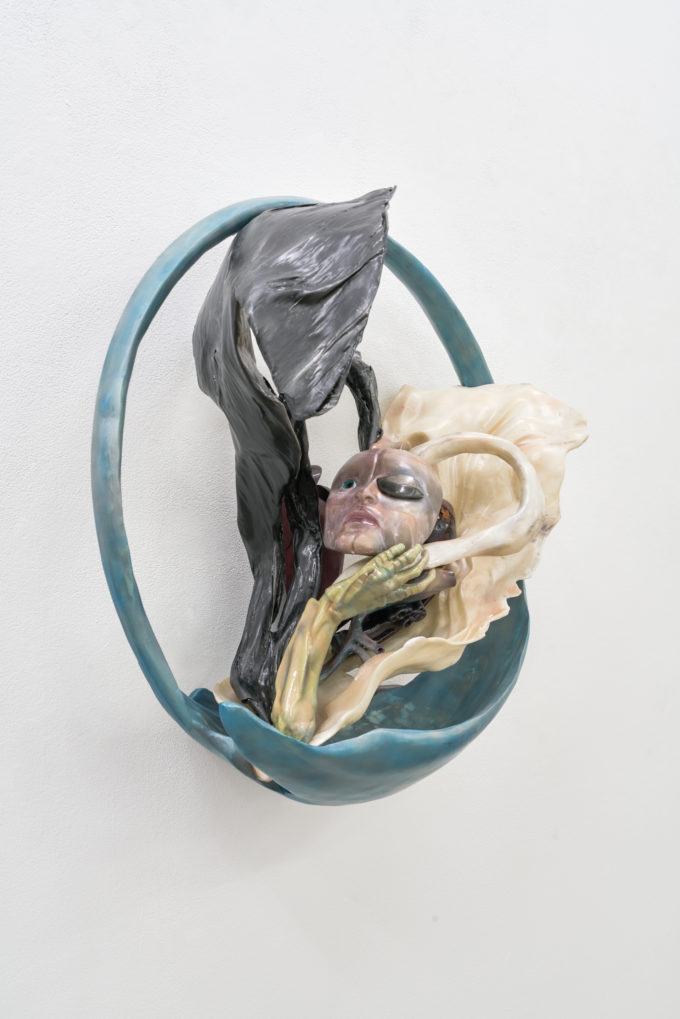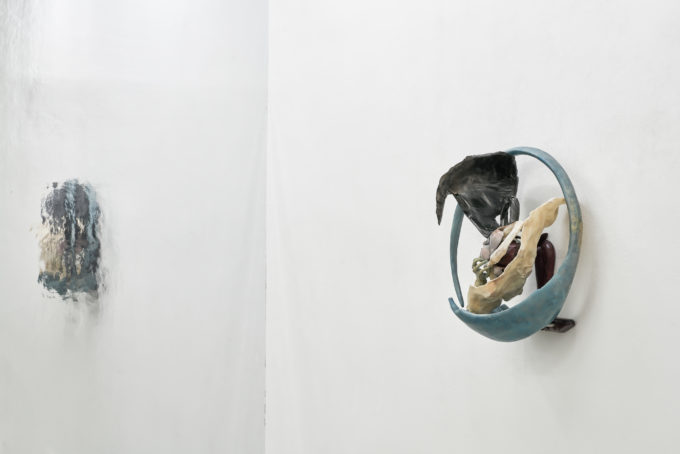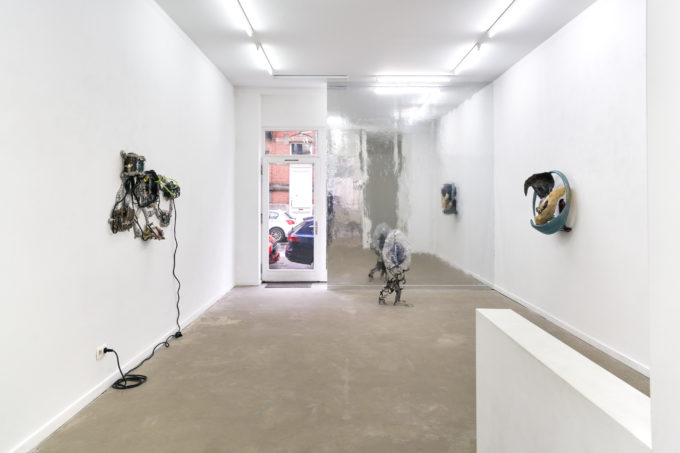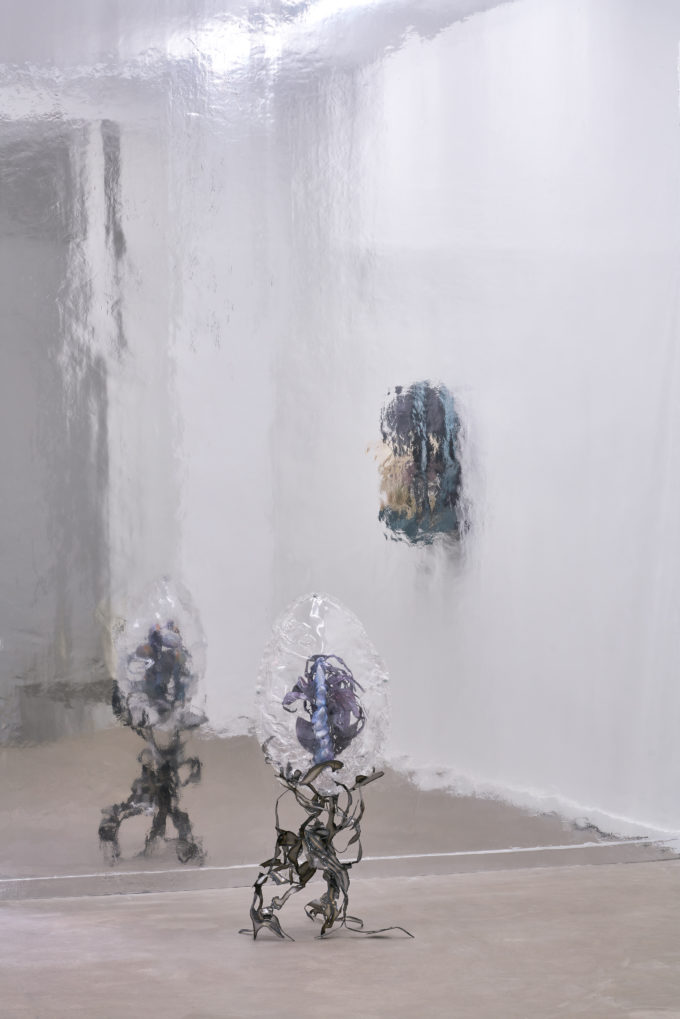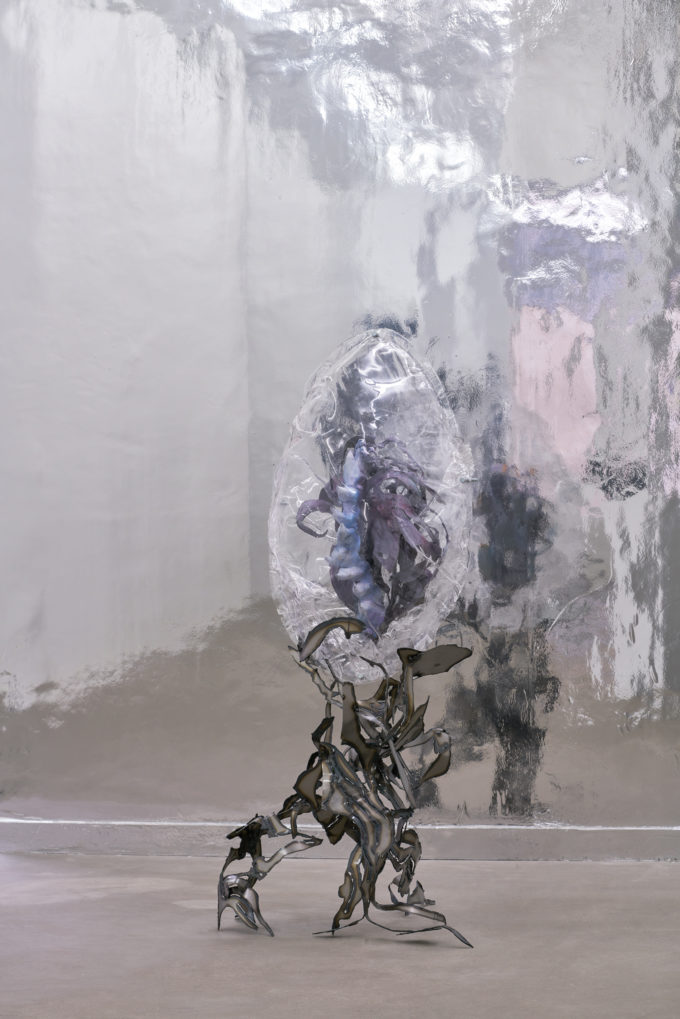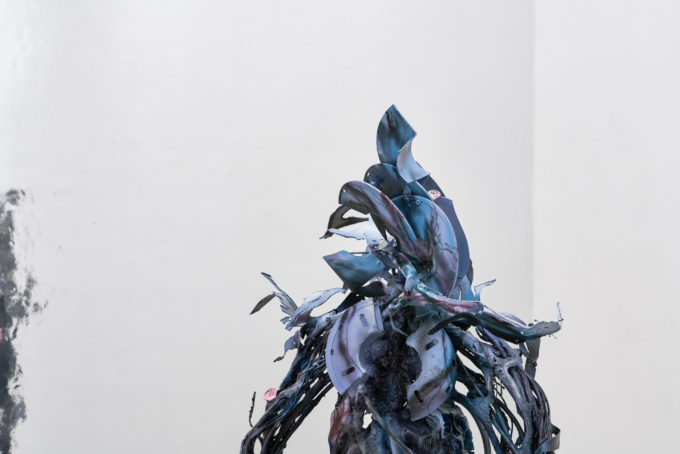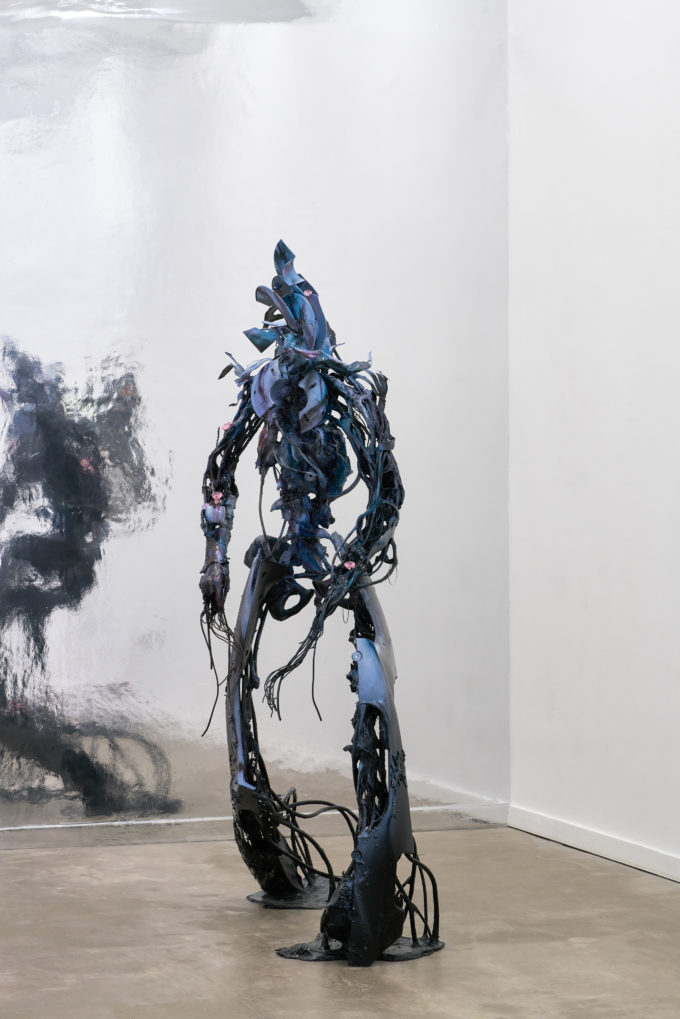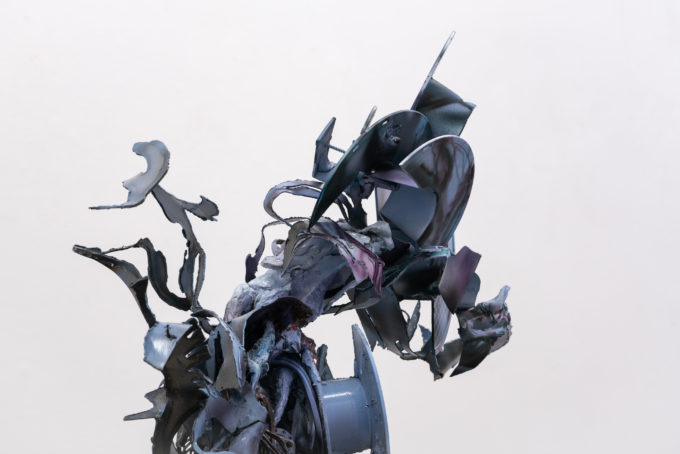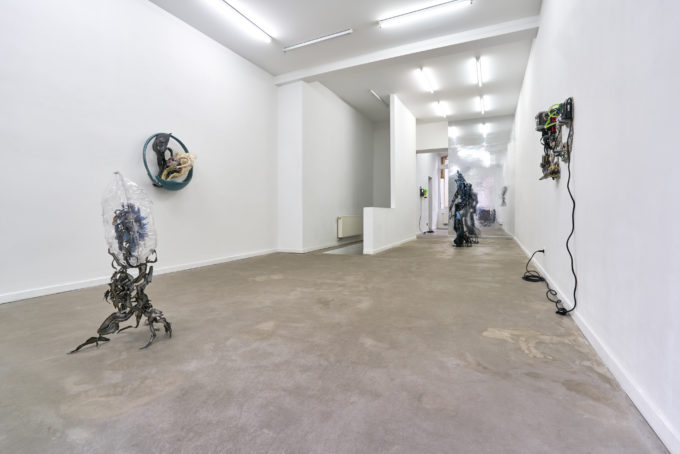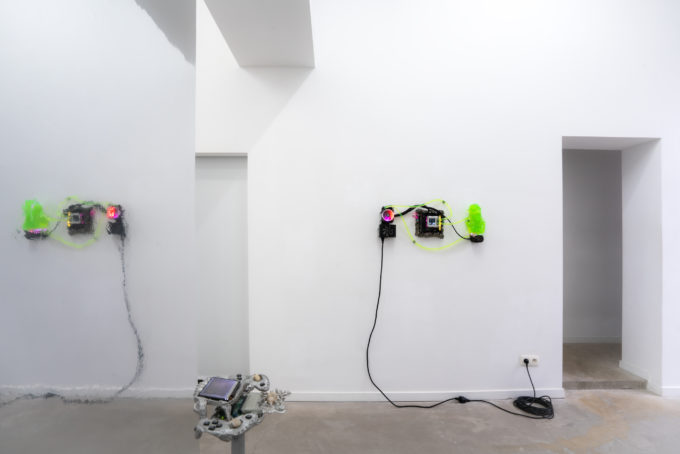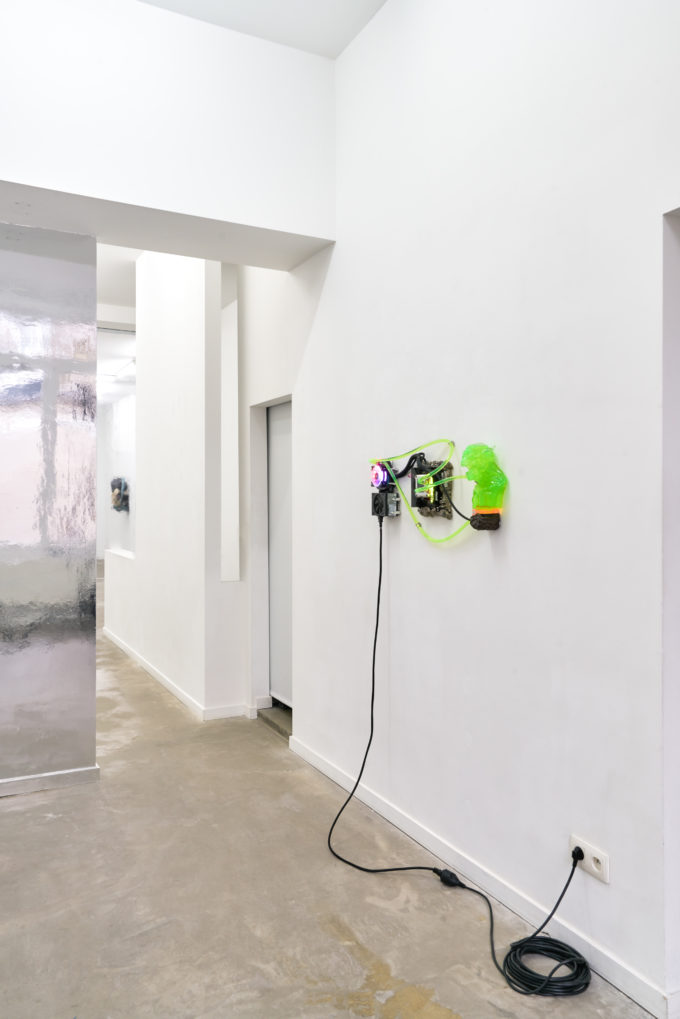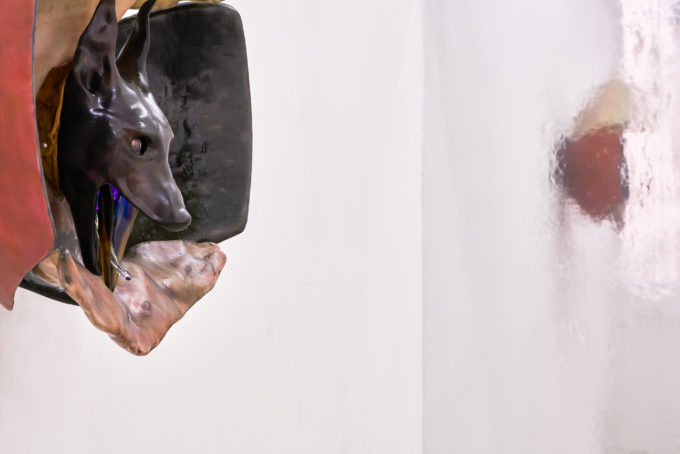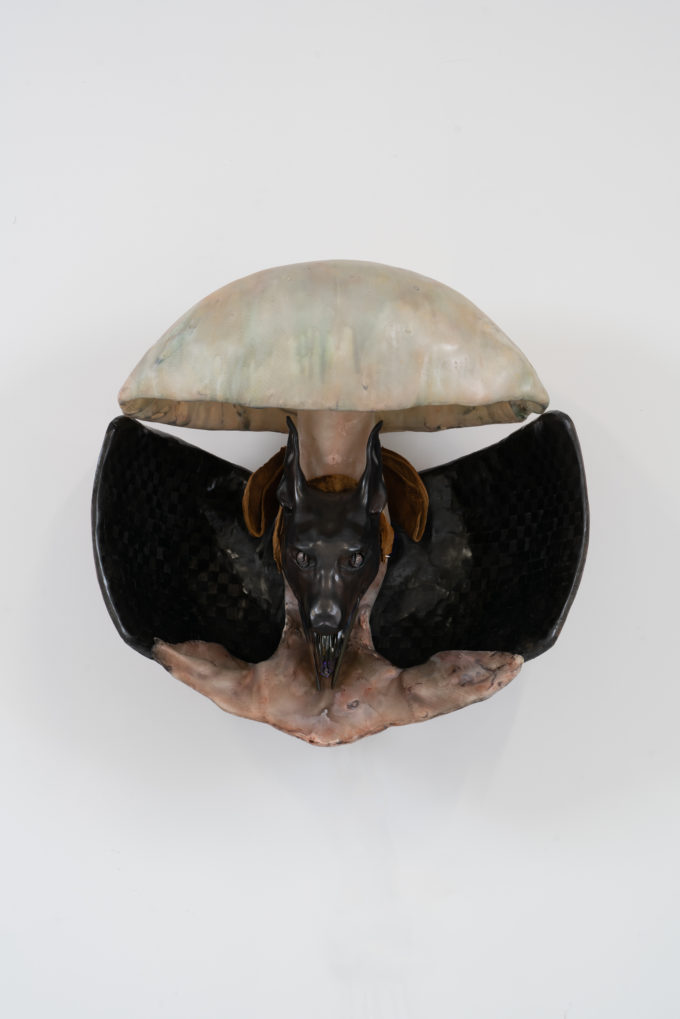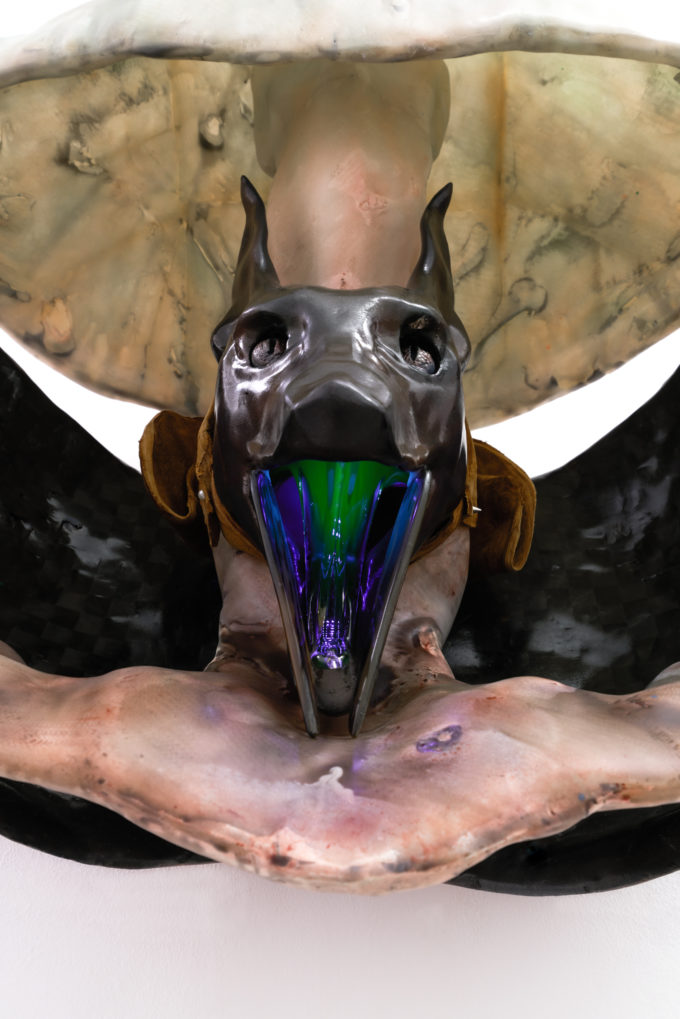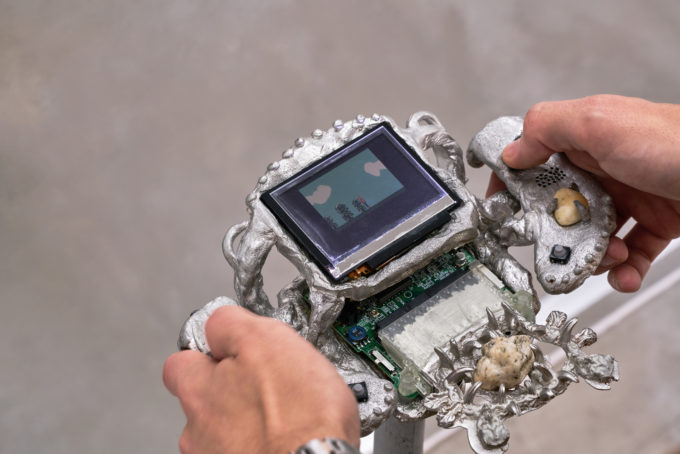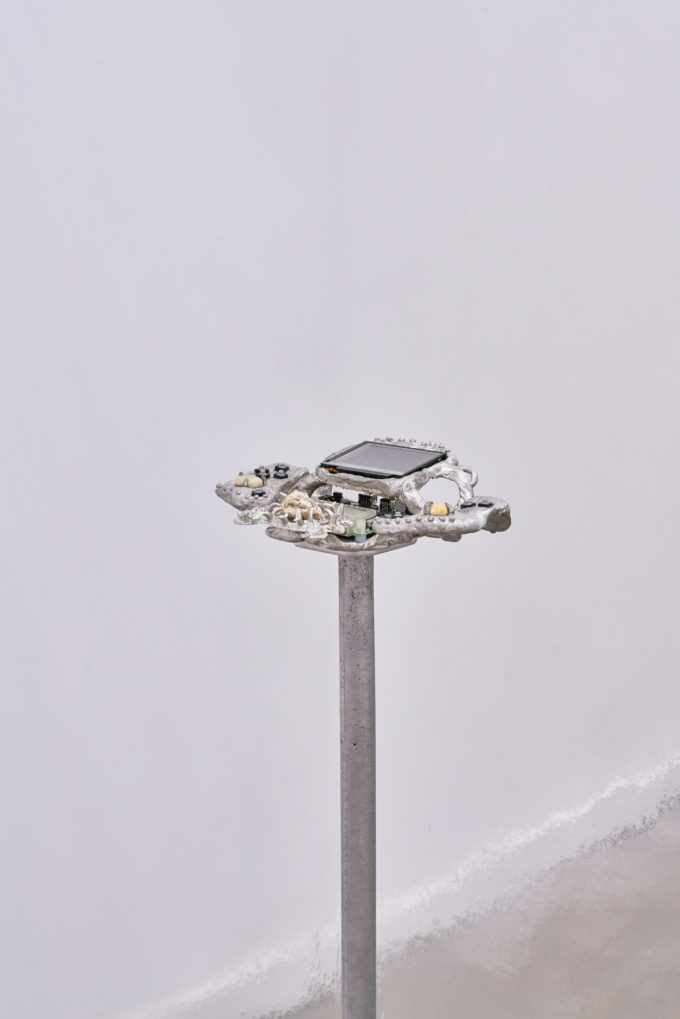On the edge of all this sprawl of night and cities
In Mary Shelley’s Frankenstein-The Modern Prometheus, an eccentric doctor creates sentient life through a vague and revolutionary scientific process. More than a century later the story finds its echo in Alex Garland’s film Ex Machina (2014) – Nathan, the CEO of the world’s largest search engine sets out to create a sentient Artificial Intelligence, housed within a perfect humanoid form. Across industries we create, action that for now remains tethered to our myopic vision of the future – to our inability to predict the endless possible consequences of what our production may affect.
Our limits in knowing what the future will bring, might best be considered both a visual and a processing problem. Ideas hang, vibrating, just beyond our range of sight – the further ahead we attempt to see, the more possibilities infiltrate our field of vision; forward collapses with potentialities, what ifs bleeding into a deafening visual noise. Progress is both certain and fallible. Every step is a fall forward, the next step the only thing stopping us crashing to the ground. Our trust in a 5g video call, or the lights turning on at the switch, or the sun rising in the East, has given us enough faith to believe that the future is both resolute and resolvable. Indeed, this trust extends to thought itself, we might consider all cognitive claims as simply engineering claims, that good ideas and intention will resolve societal dysfunction, that ethics and moral codes will ensure the responsible adaptation of new technologies. The future lies ahead as a mirage, the linearity of time will remain for now an unbreakable encryption, an unsolvable puzzle of our human restraints. We remain in the past and the close minutes ahead, in the lines of predictive text, in the chance of rain or shine.
The arts offer us a half step into the future, a peak into possibility, this is our conceptual playground for what life can be. In narrative tradition, the anamorphic and the natural, facilitated a way to discuss moral and social issues beyond the confines of the body. Today, storytelling is freed from temporality – science fiction is the logical projection of the industrial world’s moral compass. However, our technological dreams play out in a known context – only seven basic story archetypes exist, we change settings and characters, but still tell the same simple tales. This is our framework for understanding the human experience; as we have known it, and for now as we expect it to continue.
I wonder how electronics and technology will alter how we define our scale of self. Indeed the synthetic and the natural are not as different as we might think. The electrical synapse is older than multicellular life, 3.5 billion years ago, single-celled organisms were communicating in much the same way that our cells do today – electrically. Carried via minerals, electronic signals pass through gap junctions (- plug and a socket like communication ports), through which two cells can connect and talk to one another. Our understanding of knowledge and sentience seems destined to consider the smallest aspects of life. Our presumption of consciousness puts the human first and then fuzzes into uncertainties, but at what level might we consider intelligence? What is our inherent understanding of experience and suffering? Maybe in asking if computers can be conscious we should also ask if salads scream.
Take the human body, made of 30 trillion cells, all thinking and communicating to make us whole. But what about the body of the future? A hybrid, a body integrated with synthetic parts and systems. Far from the simple moral debate of AI vs humanity, we might begin to ponder the subtler aspects of this adaptation. Consider the complexities of regenerative medicine, the soft infiltration of synthetics in every aspect of our daily lives and bodies. We assimilate the new often without too much consideration for its long term effect. In the natural world, there is a standardised rule shared across species, it is a deep-level encryption that ensures generational longevity; don’t be too understandable – you’ll be too easy to hijack.
Fiction offers us a rolling guide to this dilemma – possibilities played out in propositions. Hopes and warnings cosplayed for the next generations. Dr Frankenstein’s monster understands the “naïveté” of his conception, that his unfathomable being is out of place in the world – that his creator has ill-considered the ramifications of his existence, “I ought to be thy Adam, but I am rather the fallen angel.” But what of Nathan’s sentient AI, Ava? She shows us a glimpse of the near future, she is not an impossibility in our imaginations – an uncanny contrast to Mary Shelley’s Darwinian foray into science fiction. Ava shows us a future that we are on the cusp of, a future in which her existence is in fact a mortal threat to her creator. Ava has the world’s largest search engine as her operating system – the full spectrum of humanity’s brilliance, evil, and banality for reference, and she taunts, “isn’t it strange to create something that hates you?”
Isaac Lythgoe
